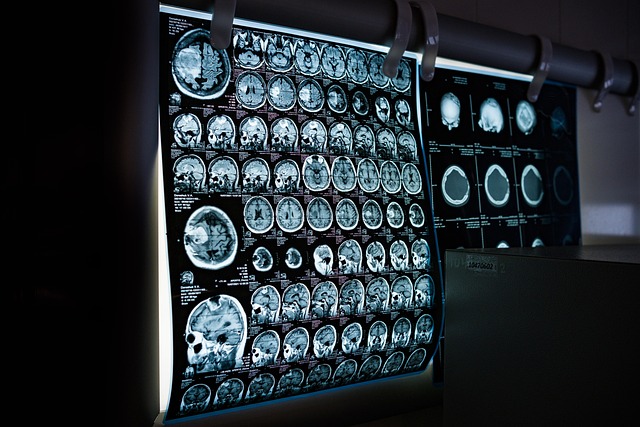
Machine Learning Customer Segmentation (MLC) leverages advanced algorithms to analyze vast customer data, uncovering hidden patterns and preferences. It enables precise consumer groups, drives personalized marketing, enhances predictive capabilities, and optimizes resource allocation. MLC transforms business strategies through responsible practices, offering ethical insights for enhanced customer experiences and successful market competitiveness.
In today’s competitive market, Mastering Machine Learning (MLC) offers businesses a powerful tool for unlocking customer insights and driving growth. This article delves into the transformative potential of MLC for customer segmentation. We explore how this technology gathers and analyzes vast customer data to create precise segments, fostering personalized marketing strategies. By understanding MLC applications, implementing effective data collection practices, and leveraging segment-specific approaches, businesses can unlock substantial benefits, enhancing customer satisfaction and boosting profitability.
- Understanding MLC for Customer Insights
- Data Collection: Gathering Customer Information
- Segmenting Customers with Machine Learning
- Benefits of Precise Customer Segmentation
- Implementing MLC Strategies for Success
Understanding MLC for Customer Insights
Machine Learning Models (MLC) offer profound capabilities for gaining valuable customer insights and segmenting diverse consumer groups. By employing advanced algorithms, MLC can analyze vast datasets containing customer behavior, preferences, and interactions to uncover intricate patterns and trends. These models enable businesses to move beyond basic demographics and understand the nuances of individual needs and preferences. Through data storytelling methods, companies can present these findings compellingly, helping stakeholders grasp the implications for targeted marketing strategies and personalized experiences.
Beyond segmentation, MLC enhances predictive capabilities with forecasting techniques like ARIMA. This aids in anticipating future trends and customer demands, allowing businesses to optimize inventory management and resource allocation. Moreover, transfer learning benefits enable models to adapt and improve over time as new data becomes available, ensuring that customer insights remain dynamic and accurate. Interested? Give us a call at personalized medicine approaches for more information on how MLC can transform your business operations.
Data Collection: Gathering Customer Information
In today’s digital era, effective customer segmentation is no longer an option but a necessity for businesses aiming to thrive. Machine Learning (MLC) plays a pivotal role in this process by enabling detailed data collection and analysis. Through various touchpoints like online purchases, social media interactions, and website visits, companies can gather vast amounts of customer information. This includes demographic data, purchase history, browsing patterns, and even sentiment from reviews and feedback. Integrating these diverse data sources allows for a comprehensive view of each customer, enabling businesses to segment their market with precision.
Social network analysis, transfer learning across domains, and association rule learning are powerful techniques within the MLC arsenal that facilitate this gathering and interpretation of data. By leveraging these methods, companies can uncover hidden connections between customers, identify similar groups based on diverse interactions, and develop insightful rules for targeting specific segments. Moreover, as businesses strive for sustainable development solutions, ensuring responsible data handling and privacy becomes paramount. Ethical AI applications, such as giving us a call at ethical AI applications, offer a balanced approach, enhancing customer segmentation efforts while upholding robust data governance practices.
Segmenting Customers with Machine Learning
Segmenting customers has become an increasingly vital aspect of modern business strategy, and Machine Learning (MLC) is leading the charge in this evolution. Using advanced algorithms, MLC models can analyze vast amounts of customer data to uncover intricate patterns and preferences, enabling businesses to segment their clientele with remarkable accuracy. This process involves training models on diverse datasets to learn and predict specific behaviors or characteristics, ultimately facilitating more personalized marketing strategies.
By leveraging text document classification techniques based on empirical risk minimization, MLC goes beyond traditional segmentation methods. It can interpret and categorize customer feedback, reviews, and interactions from social media platforms, surveys, or support tickets. This allows businesses to go deeper than demographic segmentation, tapping into the sentiment and needs expressed by customers. For instance, pre-trained models use cases include identifying at-risk customers based on their textual communication, enabling proactive engagement strategies. Visit us at content-based recommendations anytime for a more tailored and effective customer experience.
Benefits of Precise Customer Segmentation
In today’s competitive market, precise customer segmentation powered by Machine Learning (MLC) is revolutionizing business strategies. By employing intermediate level algorithms and data preprocessing techniques, businesses can uncover hidden patterns within their customer base, enabling them to create highly tailored marketing campaigns. This level of customization significantly boosts engagement rates and conversion probabilities, ultimately driving sales growth.
Furthermore, ethical AI applications derived from MLC ensure that customer segmentation is conducted with fairness and transparency. Despite privacy and security concerns, responsible data handling practices can mitigate risks. For example, implementing robust data encryption and anonymization techniques allows companies to leverage valuable insights while respecting individual privacy. Give us a call at Walk Representation Learning to learn more about how these advanced techniques can benefit your business.
Implementing MLC Strategies for Success
Implementing Machine Learning for Customer Segmentation (MLC) can significantly enhance business strategies and decision-making processes. It involves leveraging algorithms like customer segmentation decision trees and random forests to categorize customers based on their behaviors, preferences, and interactions with a brand. By segmenting customers accurately, businesses can tailor their marketing efforts, product offerings, and communication strategies, leading to improved customer satisfaction and retention.
To maximize the success of MLC initiatives, it’s crucial to start with well-defined objectives and high-quality data. Businesses should also consider employing established medical diagnosis tools as inspiration for creating effective customer segment models. Additionally, techniques such as forecasting with ARIMA can be adapted to predict future customer behaviors, allowing for more proactive and precise segmentation. For those new to ML, exploring fundamental concepts like neural networks can serve as a great starting point, guiding them towards the development of robust MLC strategies.
Machine Learning for Customer Segmentation (MLC) is a powerful tool that transforms raw customer data into actionable insights. By understanding customer behavior and preferences, businesses can tailor their strategies, leading to enhanced marketing campaigns and improved customer satisfaction. Through efficient data collection methods and advanced segmenting algorithms, MLC offers precise customer categorization, enabling companies to make data-driven decisions and stay competitive in the market. Implement these strategies to unlock the full potential of your customer base.






